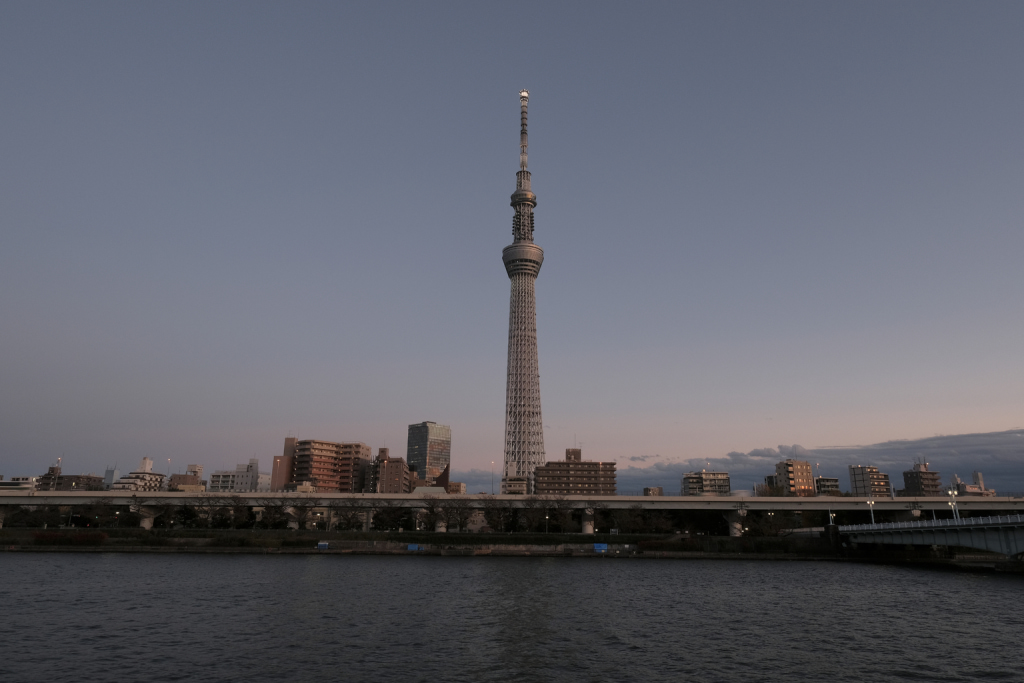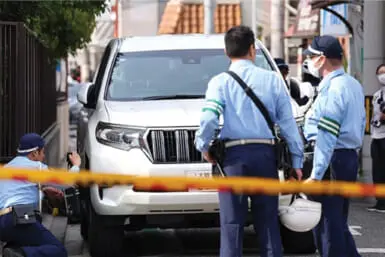The world’s second tallest man-made structure, Tokyo Skytree, dominates the Oshiage neighborhood. But take the time to wander around and you’ll be rewarded with some lovely hidden gems and beautiful hanami season scenery.
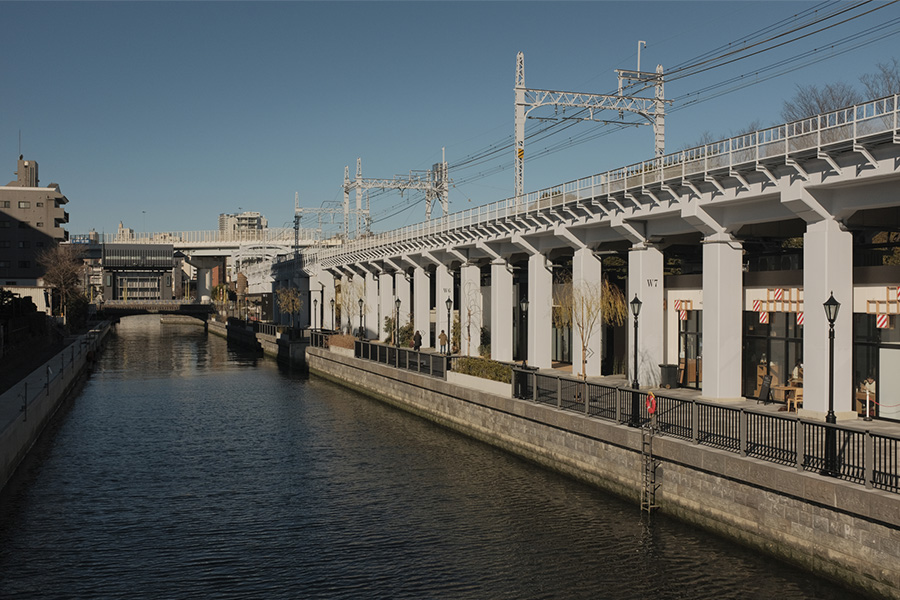
Opened in 2012 after four years of planning and construction, the centerpiece of Tokyo Skytree Town is a fairly divisive megastructure. Some lament the design and an uninteresting view from the 350- and 450-meter observation decks due to the extreme height, while others find it unique and awe-inspiring. Whatever side of the fence you happen to be on, there’s more than just the tower to entertain you.
Tokyo Solamachi, the shopping and entertainment complex around the base, is a great place to pick up some interesting original Japanese souvenirs and snacks, especially from the plethora of character stores such as Ghibli, Ultraman, HelloKitty, Pokemon etc. For a themed lunch, swing by the Kirby Cafe or the Moomin House Cafe, which even has some oversized Moomin plushes to keep you company.
The free-to-enter Tokyo Skytree Town campus of the Chiba Institute of Technology on the eighth floor allows visitors to get hands-on with some of the latest research from its labs. There’s also a life-size model of a Valkyrie VF-25 from the Macross anime series and a unique Japanese katana forged from a 450 million-year-old iron meteorite to marvel at.
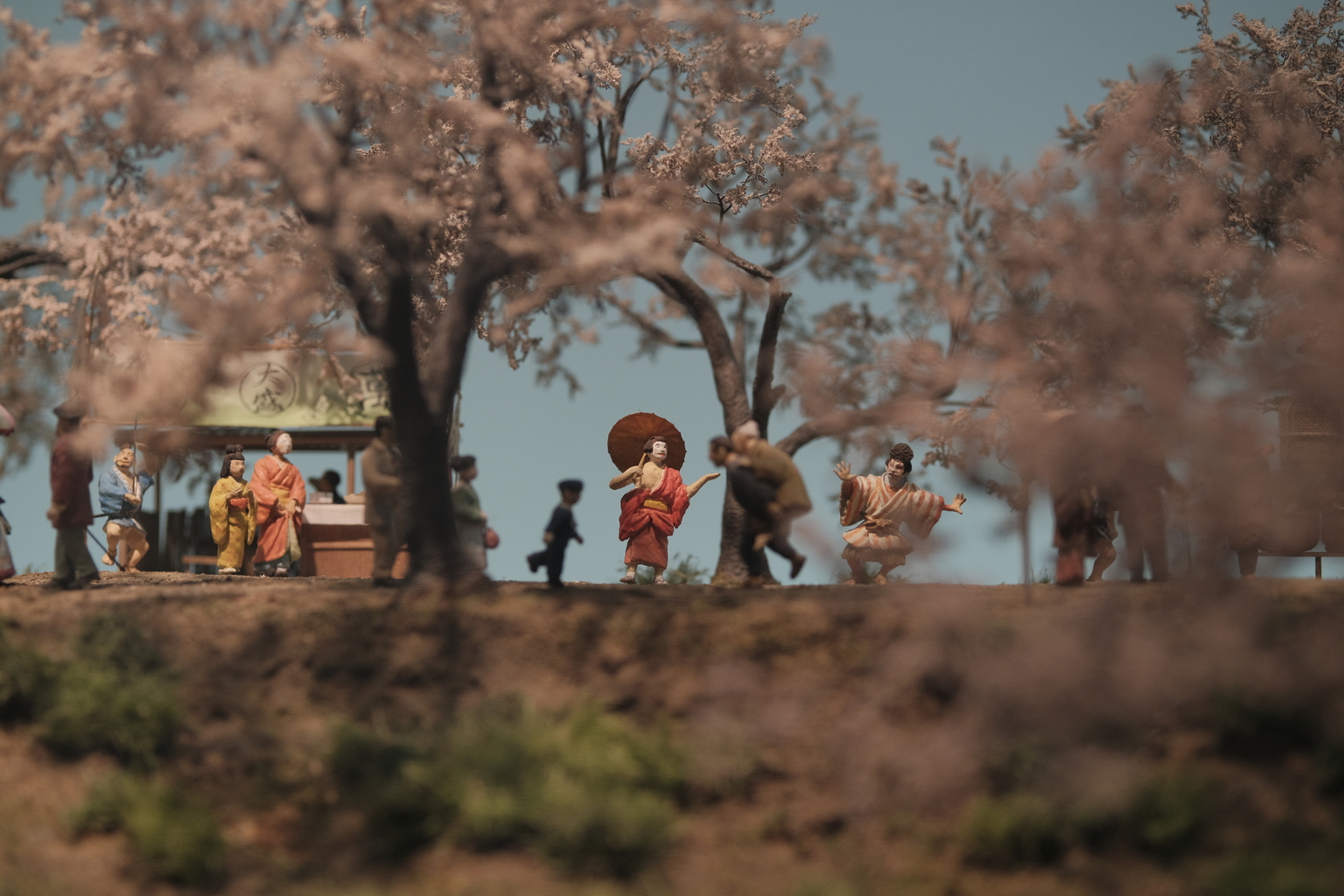
Paint it Pink
A short walk down from Tokyo Skytree Town is Sumida Park. Spanning across both sides of the Sumida River, it’s a pleasant place to spend some time relaxing under some real trees –around 500 to be somewhat precise. A popular cherry blossom viewing spot for centuries, the trees continue along the banks of the river, and with additional illuminations at night, are a stunningly beautiful spring-time sight.
And what better place to enjoy sakuramochi – a piece of mochi with a sweet, red bean paste center, wrapped in a pickled cherry blossom tree leaf – than from the very place it was invented. Made from leaves of the trees within Sumida Park by an Edo-era guardsman named Yamamoto Shinroku, he subsequently founded a store, Chomeiji Sakuramochi, in 1717, which still churns out the small sweet bundles to this day.
Head south from Skytree and enjoy more blossoms in Oyokogawa Shinsui Park along the Oyoko River. The lengthy park stretches all the way down to Kinshicho Station and is divided into five zones: Tsurikawara, Kappakawara, Hanamomiji, Palette Plaza and Blue Terrace, each with their own ambience. It’s also a much more pleasant walk over to Asakusa these days thanks to the Sumida Riverwalk and Tokyo Mizumachi promenades, both of which opened in June 2020. Pop into one of the new cafés for a relaxing brew (or even a spot of caffeine-fueled bouldering at Lattest Sports) before continuing across the river and enjoying the sweeping panoramic view of the area from the opposite side.
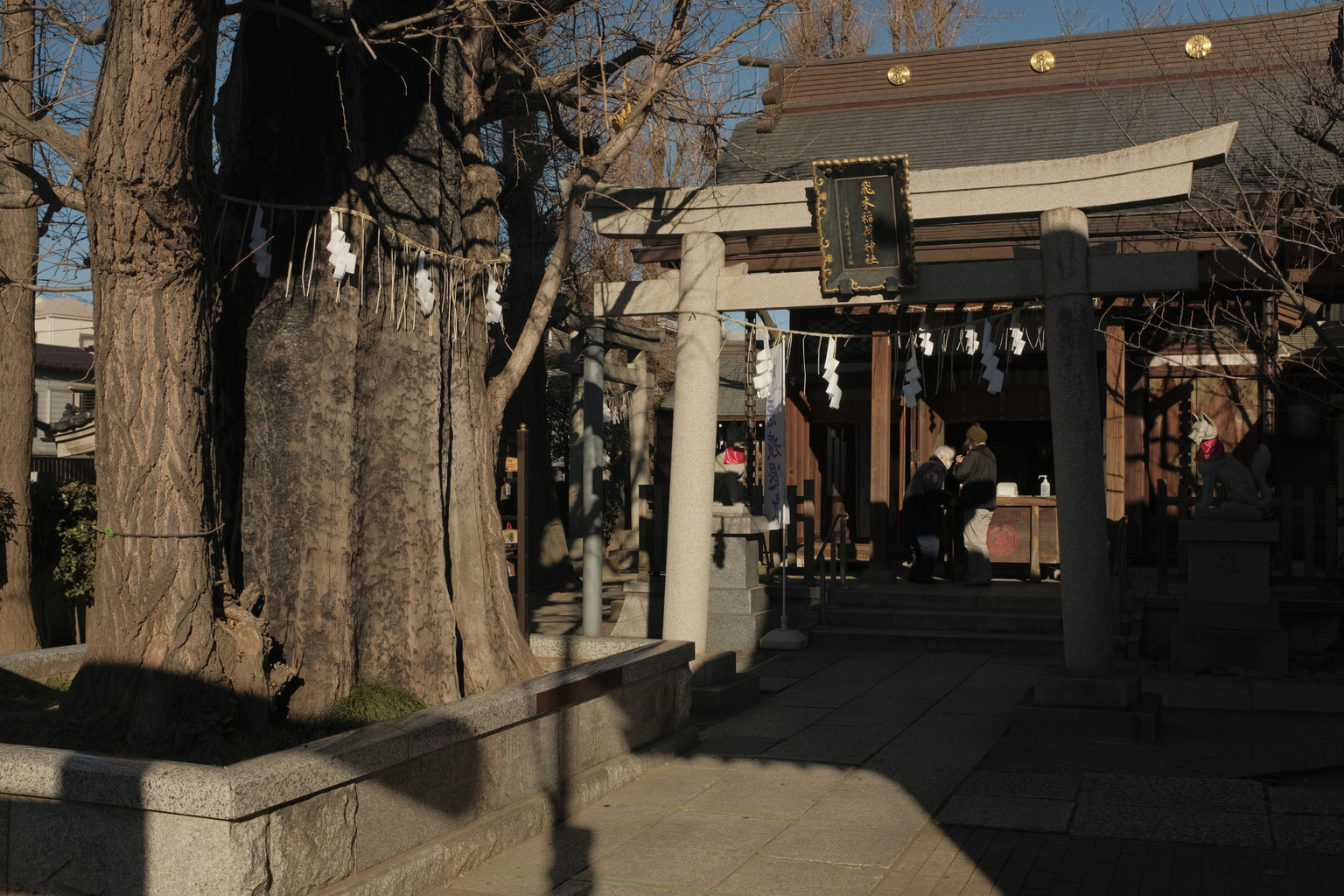
Shrines
There are a number of shrines around the neighborhood with some unique sights. Ushijima Shrine (located in Sumida Park) has a bronze statue of an ox that you can rub to ease any corresponding ailments. Tobikiinari Shrine is home to a large tree that still bears the scars from the damage inflicted upon the area during the devastating firebombing raids of 1945. A short walk up the road, the purple-colored Takagi Shrine has offerings of small white pebbles decorated as onigiri piled around its stone monuments (due to the alternate name for onigiri, omusubi, sounding similar to the enshrined god Takamimusubi no Mikoto). And finally, a bronze, Mitsukoshi department store lion from the Ikebukuro branch (until its closure in 2009) now resides in Mimeguri Jinja Shrine, which also has a rare, three-cornered stone torii covering an old well on the grounds.
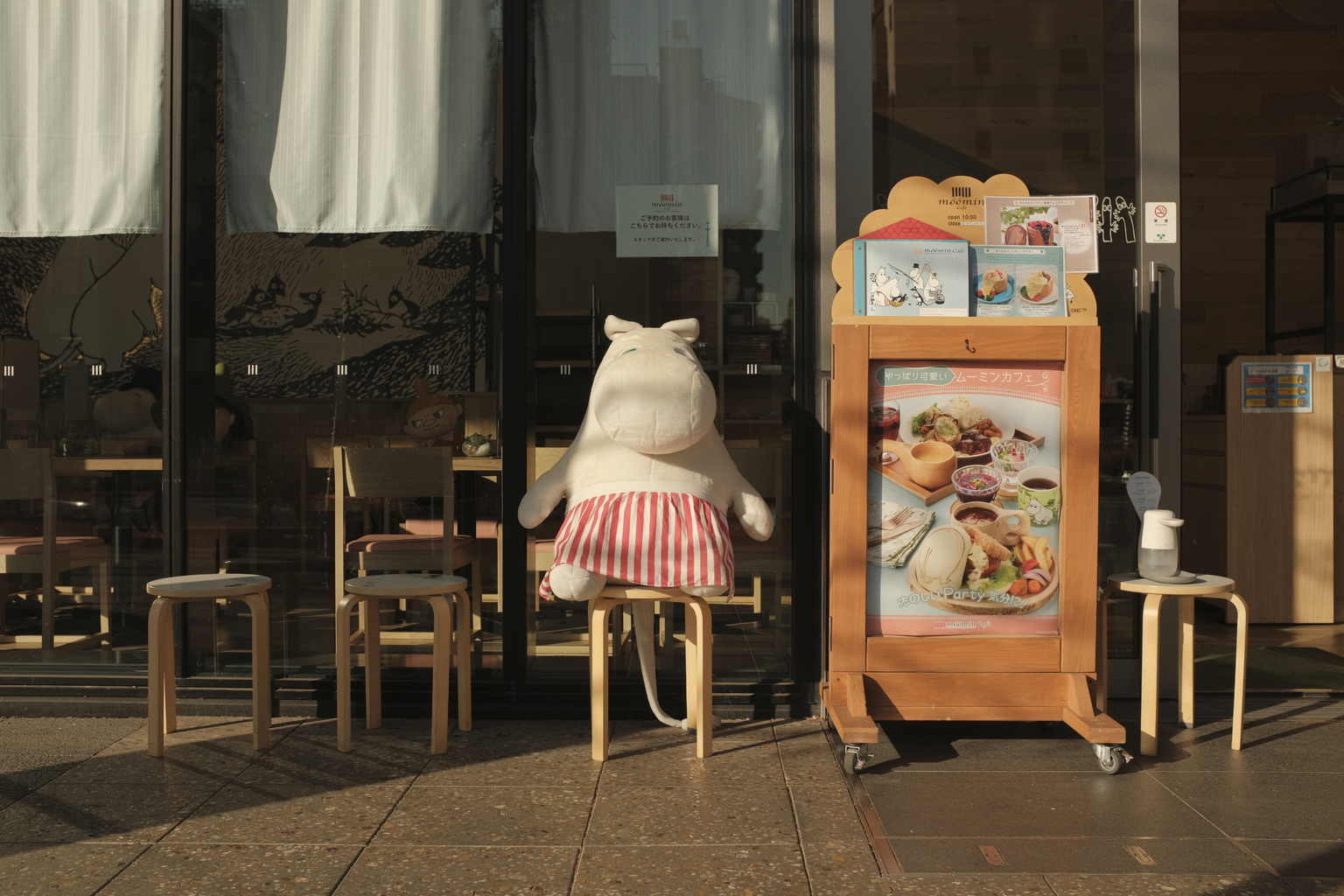
Back in the Day
There are more links to the area’s rich past to discover by just exploring the backstreets and embracing the shitamachi vibe. Head along Hatonomachi Dori Shotengai where you can give your legs a rest at Koguma and enjoy some refreshments within a renovated Showa era residence.
If you want to dig deeper into the history of the neighborhood then head over to the three-story Sumida Heritage Museum. It’s quite small and, unfortunately, there are no English-language translations for anything. However, that shouldn’t put you off from paying the cheap ¥100 entry fee and popping up to the second floor to take a look at a lovely day-night cycle diorama of Edo-era life along the Sumida River, ukiyo-e prints and also some harrowing artworks depicting the horrific firebombing of 1945.
There are a couple of more museums in the area that warrant a visit. Across from Oyokogawa Shinsui Park, The Tobacco and Salt Museum (which was located in Shibuya until 2015) does an excellent job of making what might seem a rather bland topic a fascinating journey through the history of both products and their impact on Japan. On the ninth floor of Tokyo Solamachi, visitors can find the Postal Museum Japan. Along with more general items related to Japan’s postal system and its past, stamp enthusiasts can marvel at the museum’s massive collection before posting off a memorial mail adorned with an official Skytree stamp to commemorate the visit.
Photos by Stephan Jarvis

